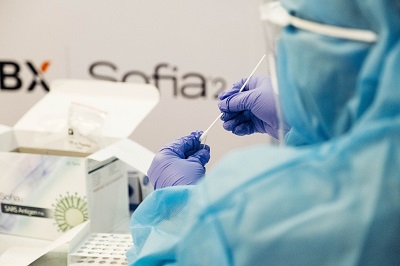For Class A medical device MDA registration in Malaysia, the technical documentation (often referred to as the Technical File) must meet specific requirements set by the Medical Device Authority (MDA). This documentation is crucial for demonstrating the safety, performance, and quality of the device. Although Class A devices are low-risk, they still need to comply with regulatory requirements to ensure that they are safe for use.
Here’s an overview of the technical documentation requirements for registering a Class A medical device in Malaysia:
1. Device Description
- Description of the Device: Provide a detailed description of the device, including its intended use, physical characteristics, design, and how it works.
- Classification: Clearly indicate that the device is Class A based on its low-risk classification, as per the Malaysian Medical Device Regulations.
- Intended Use: A clear statement of the device's intended use and its target patient population (if applicable).
- Device Components: List the materials and components that make up the device (e.g., plastic, metal, electronics) and any packaging or accessories included in the device.
- Manufacturing Details: Information about the device’s manufacturing process, production environment, and quality control practices.
2. Risk Management Documentation
- Risk Assessment: A summary of the risk management process, in accordance with ISO 14971 (Risk Management for Medical Devices). This includes identifying potential risks associated with the device and how those risks are mitigated or controlled.
- Risk Classification: Explanation of how the device’s risk classification is determined, ensuring that it meets the Class A category under Malaysian regulations.
3. Safety and Performance Data
- Conformance to Safety Standards: Evidence that the device complies with relevant safety and performance standards. For Class A devices, the standards could include electrical safety (IEC 60601), biocompatibility (ISO 10993), or functional safety depending on the type of device.
- Test Reports: If applicable, include test reports that demonstrate the device’s safety and effectiveness. For Class A devices, this may not be as extensive as for higher-risk devices, but certain tests may still be necessary, especially for devices that come into contact with the body or are intended for critical functions.
4. Manufacturing Process and Quality Control
- Manufacturing Site: Information about the manufacturing site, including the quality management system in place (ISO 13485).
- Quality Control: An outline of the quality control and assurance processes used to ensure that the device meets the necessary safety and performance standards during production.
- Inspection and Testing Procedures: Details on how the device is tested for defects or performance issues before it is released to the market.
5. Labeling and Instructions for Use (IFU)
- Labeling: Provide a copy of the device’s labeling, which must include:
- Device name and model.
- Manufacturer’s or Authorized Representative’s name and contact details.
- Intended use and indications for use.
- Important safety warnings or precautions.
- Date of manufacture and expiration date (if applicable).
- Batch or lot number.
- CE mark or other international compliance marks (if applicable).
- Instructions for Use (IFU): A clear and concise document that provides instructions on the safe and effective use of the device. This should include:
- Step-by-step instructions for the device’s use.
- Warnings or precautions to ensure safe use.
- Maintenance, storage, and disposal instructions (if applicable).
- The IFU should be provided in both English and Malay.
6. Clinical Evaluation (If Applicable)
- Clinical Data: For most Class A devices, clinical data is not required. However, if the device is intended for use in a clinical or diagnostic setting or has been previously marketed in other jurisdictions with clinical data, you may need to provide this information to demonstrate its safety and performance.
- Post-Market Surveillance: Even for Class A devices, if the device is already in use in another market, you may need to provide post-market surveillance data (such as customer complaints, adverse event reports, etc.) to support its safety profile.
7. Declaration of Conformity
- Declaration of Conformity: The manufacturer must submit a self-declaration (for Class A devices) that the device complies with the Malaysian Medical Device Regulations and international standards. This declaration confirms that the device meets essential safety and performance requirements.
- The Declaration of Conformity should be signed by the manufacturer or Authorized Representative and should be provided alongside the application.
8. Other Documentation (If Applicable)
- Biocompatibility Testing: If the device has direct or prolonged contact with the body (such as surgical instruments or implants), biocompatibility testing may be required. Testing should comply with ISO 10993 standards.
- Electromagnetic Compatibility (EMC) and Electrical Safety: For devices with electrical components (e.g., diagnostic equipment), compliance with IEC 60601 or IEC 61010 standards for electrical safety and electromagnetic compatibility (EMC) may be required.
Preparing the Technical Documentation:
- Ensure Completeness: All sections of the technical documentation should be complete and accurate. Any missing information may result in delays in processing the registration.
- Follow MDA Guidelines: The Malaysian Medical Device Authority (MDA) guidelines specify the required content and format of the documentation. Refer to the MDA’s official resources to ensure compliance.
- Language Requirements: All documents must be submitted in English. If needed, provide Malay translations for labels, instructions for use, and any other critical documents.
- ISO 13485 Certification: Ensure that your manufacturing facility has ISO 13485 certification, as it is a key requirement for medical device registration in Malaysia.
Summary of Key Technical Documentation for Class A Registration:
- Device Description and Classification
- Risk Management Documentation (ISO 14971)
- Safety and Performance Data (Test Reports)
- Manufacturing and Quality Control Process
- Labeling and Instructions for Use (IFU)
- Clinical Evaluation Data (if applicable)
- Declaration of Conformity
By preparing the technical documentation according to these requirements, you ensure that your Class A medical device meets the regulatory standards for registration with the MDA in Malaysia.

Contact Us:
Whatsapp or Wechat:+86 15816864648;email address:hito.lin@grzan.cn
.png)
.jpg)
.png)

.png)